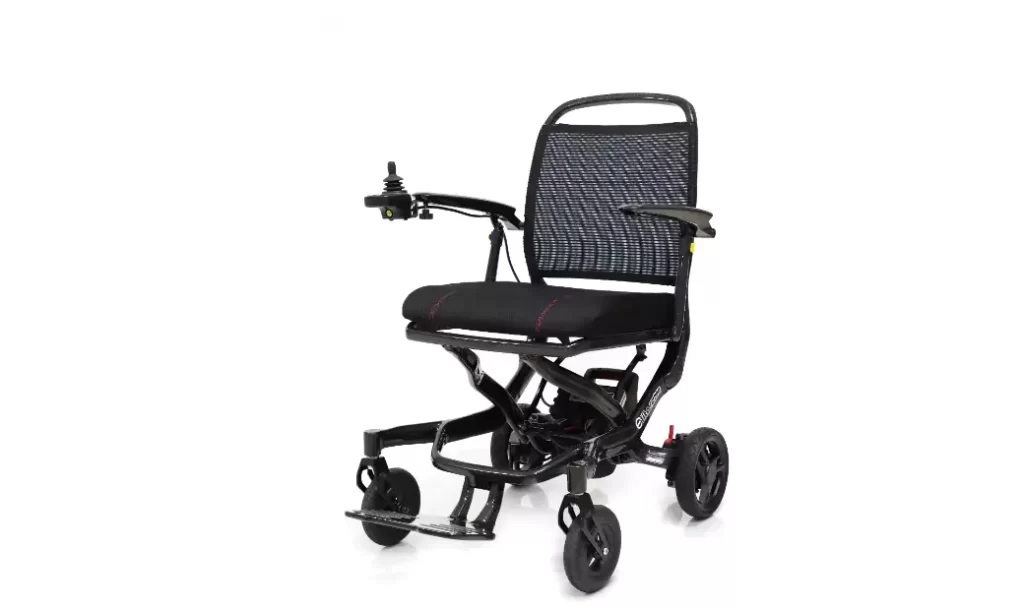Contact Us
Lightweight Wheelchair Market Grows as Demand for Portable Mobility Solutions Rises
2025-10-22
Introduction
The global demand for mobility aids has evolved significantly, with lightweight wheelchairs emerging as one of the most promising product categories. As populations age, urban lifestyles intensify, and healthcare infrastructure improves, both individuals and institutions are prioritizing mobility solutions that combine portability, comfort, and durability.
Manufacturers like INTCO Medical, a leading global provider of rehabilitation equipment, are actively contributing to this trend through innovation, ergonomic design, and user-centered development.

Market Overview and Growth Drivers
Expanding Market Opportunities
The lightweight wheelchair market has witnessed steady growth across both developed and developing economies. This momentum can be attributed to several converging factors: rising disability awareness, advances in materials science, and the growing influence of healthcare reimbursement systems.
According to a Fortune Business Insights report, the global wheelchair market is projected to continue expanding through 2032, driven primarily by the need for enhanced user convenience and mobility independence (Fortune Business Insights, 2024). The study highlights a key transition from traditional heavy steel-frame wheelchairs to aluminum and carbon fiber models that offer similar durability with substantially reduced weight.
Institutional Adoption Rising
The expanding healthcare infrastructure across Asia-Pacific, Latin America, and Eastern Europe has opened new opportunities for lightweight wheelchair manufacturers. Many hospitals and rehabilitation centers in these regions are replacing outdated models with modern, foldable units that simplify transport and storage.
Why Lightweight Wheelchairs Are in Demand
Portability and Independence
Lightweight wheelchairs meet a critical market need for mobility solutions that prioritize ease of handling without sacrificing performance. For individual users, the key appeal lies in portability and autonomy—being able to fold, carry, or load the wheelchair into a car independently.
Shift Toward Home Healthcare
In the post-pandemic era, consumers and facilities alike have shifted their focus to versatility and personal comfort. Portable wheelchairs allow users to navigate domestic spaces more easily, reinforcing independence and social participation.
A report by Allied Market Research confirms that the rising adoption of homecare rehabilitation equipment has directly fueled the growth of the lightweight wheelchair segment (Allied Market Research, 2023).

Technological Innovations and Material Advancements
Material Science Leading the Way
The most defining factor behind the surge in lightweight wheelchair adoption is material innovation. Manufacturers are investing heavily in aluminum alloys, carbon fiber composites, and advanced polymers that balance strength, safety, and weight efficiency.
Ergonomic and Modular Design
Incorporating ergonomic design and modern engineering principles has further elevated user experience. Some models now integrate adjustable backrests, quick-release wheels, and detachable cushions, contributing to enhanced practicality and comfort.
INTCO Medical’s E-LITE wheelchair exemplifies this progress. Constructed with a sleek aluminum frame and customizable color options, it combines lightweight design with dependable performance. The detachable seat cushion and foldable backrest further enhance its modern aesthetics and user convenience.
Key Applications Across the Healthcare Industry
Hospital and Rehabilitation Use
Lightweight wheelchairs are vital components of healthcare and rehabilitation ecosystems. Hospitals use them for short-distance patient transport, while physiotherapy centers integrate them into mobility training programs. The reduced weight minimizes staff fatigue and lowers the risk of injuries during patient handling.
Long-Term and Institutional Care
In nursing homes or assisted living centers, these wheelchairs promote outdoor engagement and independence. According to Research and Markets (2023), long-term care providers are among the fastest-growing institutional buyers of lightweight wheelchairs, reflecting a broader shift toward patient-centered care.
Global Accessibility Programs
Public health initiatives in developing regions increasingly procure lightweight wheelchairs for their practicality and low shipping costs—especially in rural or remote areas with limited transport infrastructure.
The Role of Customization and Ergonomics
Rise of Personalized Mobility
One of the defining shifts in the market is the move toward customization. Users now expect adjustable features that suit their unique body types and health needs.
Manufacturers like INTCO Medical have responded with versatile products such as the ACTIVE wheelchair, featuring adjustable seat height, backrest angle, and gravity balance. Its lightweight structure enhances maneuverability while supporting active lifestyles.
Cost Efficiency Through Modularity
Customization not only improves user comfort but also extends the wheelchair’s lifespan. Modular parts allow hospitals and distributors to upgrade or replace components without purchasing an entirely new unit—improving long-term cost efficiency.
Global Market Segmentation and Regional Insights
Mature Markets and Emerging Leaders
The lightweight wheelchair market shows strong regional segmentation. North America and Western Europe continue steady growth due to advanced healthcare systems, while Asia-Pacific leads in volume expansion.
According to Market Research Future (2024), countries like China, Japan, and India are projected to dominate market share by 2030, supported by public awareness and affordable pricing. Latin America and Africa are also emerging as new frontiers for accessible mobility solutions.
Policy Support and Social Inclusion
Government initiatives such as disability subsidies and reimbursement programs have played a vital role in expanding market accessibility, driving increased procurement from both public and private sectors.
Sustainability and Lifecycle Efficiency
Eco-Friendly Materials and Processes
Environmental sustainability has become an essential consideration. Lightweight designs often rely on recyclable aluminum or carbon fiber, reducing waste and promoting circular manufacturing.
Long-Term Operational Efficiency
Because lightweight wheelchairs require less maintenance and energy for production, they offer lower total lifecycle costs—an attractive proposition for large healthcare institutions and distributors.
Competitive Landscape and the Role of INTCO Medical
Innovation and Differentiation
Competition within the lightweight wheelchair segment is intensifying. Manufacturers differentiate through innovation, certifications, and customer-focused engineering.
INTCO’s Contribution to Global Mobility
INTCO Medical strengthens its global presence with diverse models including E-LITE, ACTIVE, and DOLY. Each combines quality materials, ergonomic precision, and modern style—addressing everyday comfort as well as professional performance.
By focusing on affordability, reliability, and aesthetics, INTCO continues to attract healthcare buyers and distributors worldwide, particularly in emerging markets where value and dependability are key purchasing factors.
Challenges and Future Outlook
Material Costs and Quality Control
Despite its rapid growth, the industry faces challenges such as high material costs for carbon fiber and maintaining consistent product quality across global supply chains.
Smart Wheelchair Innovations Ahead
Future advancements are expected to integrate IoT-enabled tracking, automatic braking, and biometric monitoring. These innovations will redefine how lightweight wheelchairs support independence and healthcare connectivity.
Conclusion
The lightweight wheelchair market represents a major transformation in global mobility. Advances in materials, ergonomics, and healthcare accessibility have made portable designs the preferred choice for users and institutions alike.
With its commitment to design innovation and sustainable production, INTCO Medical stands out as a leading force shaping the next generation of rehabilitation technology. As demand for portable, customizable, and eco-friendly solutions continues to rise, lightweight wheelchairs will remain a central focus of global mobility innovation.
References
-
Allied Market Research. (2023). Wheelchair Market by Product Type, End User, and Region – Global Forecast, 2032. Retrieved from https://www.alliedmarketresearch.com/wheelchair-market
-
Fortune Business Insights. (2024). Wheelchair Market Size, Share, Growth, and Trends to 2032. Retrieved from https://www.fortunebusinessinsights.com/industry-reports/wheelchair-market-100588
-
Market Research Future. (2024). Lightweight Wheelchair Market Research Report – Forecast to 2030. Retrieved from https://www.marketresearchfuture.com/reports/lightweight-wheelchair-market
-
Research and Markets. (2023). Global Wheelchair Market Forecast 2023–2030. Retrieved from https://www.researchandmarkets.com/reports/global-wheelchair-market



